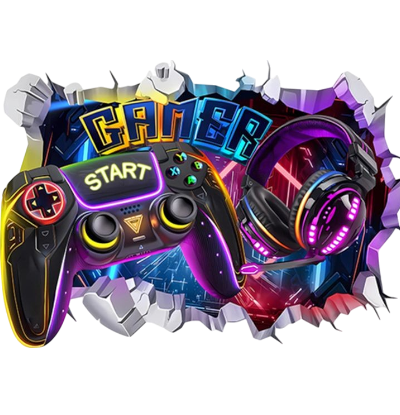Half-Life: The Shocking Secret Behind Its Success
The Rise of a Gaming Phenomenon
When Half-Life was released in 1998, it was more than just another first-person shooter—it was a revolutionary leap in gaming. Developed by Valve Corporation, this groundbreaking title set a new standard for immersive storytelling, advanced AI, and dynamic gameplay. Unlike its competitors, Half-Life did not rely on cutscenes to drive its narrative. Instead, it seamlessly integrated storytelling within the gameplay, ensuring an uninterrupted, immersive experience that captivated players worldwide.

Revolutionary Game Design That Changed Everything
Half-Life introduced several game-changing mechanics that are now considered industry standards. These include:
1. Seamless Narrative Integration
Most first-person shooters of the era used level-based progression with pre-rendered cutscenes. Half-Life abandoned this approach, opting instead for a continuous, real-time narrative where the player remained in control throughout. There were no breaks in the action—everything happened organically, keeping players immersed in the unfolding mystery.
2. Advanced Artificial Intelligence (AI)
Enemies in Half-Life weren’t just mindless targets; they demonstrated complex behaviors. The AI-controlled enemies, particularly the military personnel (H.E.C.U.), executed team-based tactics, using flanking maneuvers, cover strategies, and even grenades to flush players out of hiding. This level of intelligence was unprecedented at the time and contributed to Half-Life’s reputation as an advanced shooter.
3. Innovative Physics and Interactive Environments
Half-Life was one of the first games to introduce realistic physics-based interactions. From pushing boxes to breaking glass and manipulating objects in the environment, the game offered an unparalleled sense of realism. This feature became the foundation for future physics-based gameplay, influencing titles like Portal, BioShock, and even the Half-Life sequels.
The Unexpected Influence of Half-Life’s Modding Community
One of the most overlooked secrets behind Half-Life’s success was its open-ended modding support. Valve provided developers and players with powerful modding tools, which led to the creation of legendary mods that eventually became standalone games, such as:
- Counter-Strike – Originally a Half-Life mod, this game became one of the most popular multiplayer shooters of all time.
- Day of Defeat – A World War II-based team shooter that gained a massive following.
- Team Fortress Classic – A game that laid the groundwork for the wildly successful Team Fortress 2.
By encouraging a modding community, Valve ensured that Half-Life remained relevant long after its initial release. This strategy not only extended the game’s lifespan but also cemented Valve’s dominance in the gaming industry.
Technical Innovations That Redefined Gaming
1. The GoldSrc Engine: A Technological Marvel
Valve’s GoldSrc engine, based on a heavily modified version of the Quake engine, was a technical masterpiece. It introduced several breakthrough features, such as:
- Real-time lighting effects that enhanced immersion.
- Complex enemy pathfinding AI.
- Advanced scripted sequences, which kept players engaged without interrupting gameplay.
The GoldSrc engine not only powered Half-Life but also became the foundation for multiple successful games, further amplifying its influence in the industry.
2. Dynamic Sound Design and Atmospheric Audio
Half-Life was one of the first games to use dynamic sound effects based on the player’s position and surroundings. The game’s AI-controlled enemies reacted to sound, making stealth tactics a viable option. Additionally, the atmospheric soundtrack and eerie sound design elevated tension, making every moment feel impactful and immersive.
Half-Life’s Cultural Impact and Lasting Legacy
The success of Half-Life was not just technical—it was cultural. The game redefined expectations for storytelling, AI, and level design in FPS games. More importantly, it set the stage for Half-Life 2, which would go on to be one of the most critically acclaimed games of all time.
1. Half-Life 2: The Sequel That Redefined Gaming Again
With the release of Half-Life 2 in 2004, Valve once again revolutionized the industry. This sequel introduced:
- The Source engine, which set a new benchmark for realistic physics.
- The Gravity Gun, which remains one of gaming’s most iconic weapons.
- A deeply engaging storyline, featuring Gordon Freeman’s return to a dystopian world.
Half-Life 2’s success was so profound that fans have been clamoring for a full-fledged Half-Life 3 for over two decades.
2. Half-Life’s Influence on Modern Gaming
Without Half-Life, the gaming industry as we know it would be drastically different. Its legacy can be seen in countless modern titles, including:
- Bioshock, which embraced Half-Life’s seamless storytelling approach.
- The Call of Duty series, which refined and expanded upon scripted FPS encounters.
- Portal, which emerged from Half-Life’s modding scene and became a best-selling franchise.
The Shocking Secret Behind Half-Life’s Success
While many credit Half-Life’s advanced AI, immersive storytelling, and innovative physics for its success, the real secret lies in its ability to evolve and stay relevant. From fostering a thriving modding community to pioneering new gameplay mechanics, Half-Life wasn’t just a game—it was a movement that reshaped the industry.
Conclusion: Why Half-Life Still Matters Today
Despite being over two decades old, Half-Life remains a gold standard in gaming. Its influence continues to shape the industry, inspiring modern developers to push the boundaries of storytelling, AI, and gameplay mechanics.
As we look toward the future, rumors of Half-Life 3 persist, and the demand for a true sequel remains stronger than ever. Whether Valve delivers or not, Half-Life’s place in gaming history is undeniable—and its legacy will continue to influence the gaming world for generations to come.





















